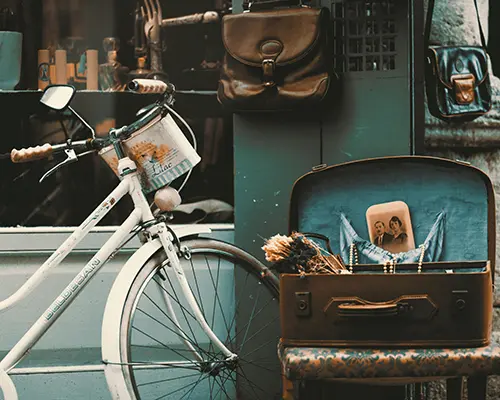In this blog, Antonia Cheese ponders on the powerful yet paradoxical emotion of nostalgia – how it has successfully been harnessed by brands in recent years demonstrating that it can be leveraged to build brand presence and preference amongst customers.
It’s the weekend and I’m enjoying a little bit of retail therapy with a friend. As I walk around the shops, there’s no doubt, 90’s and 00’s fashion has made a comeback and I’m getting flashbacks to my teenage years. They say fashion trends are cyclical and if you wait long enough, eventually you’ll see fashions make a return – this has certainly become evident!
But it’s not just fashion that is bringing me back to my teens and giving me a sweet sense of nostalgia. Every time I turn on the TV lately I’m seeing a reboot of an old tv show (anyone else loving Gladiators right now?) or familiar characters returning to soaps (even if we thought they were dead and gone forever). And music, songs that didn’t even reach the top of the charts on initial release are now bouncing back up the charts for a second try thanks to successful TV shows and TikTok challenges.
The sense of déjà vu seems to be everywhere you look at the moment and it’s really no surprise.
In times of change and uncertainty (of which we have had plenty recently), we look for stability and safety in the familiar and often reach for our rose-tinted glasses to relive the ‘good old days’.
From a psychology point of view, nostalgia fulfills our need to believe things will get better again, because they have been good before. And brands have been tapping into this emotion in recent years to great success, below are three examples that have grabbed our attention:
- Netflix has a strong background in leveraging nostalgia – think Stranger Things set in the 80’s or Firefly Lane with multiple flashbacks to the 70’s and 80’s. But a great example of nostalgia with a modern twist is Wednesday, the classic Adams Family reboot released in 2022. With a heritage tracing back to 1930’s cartoons, tv series in the 60’s and films in the 90’s it had the ability to cross generations when it returned to our screens and went down a storm. Of course, that iconic dance scene going viral on TikTok, also helped the show’s success.
- Turning to advertising now, McDonalds recent ‘keep up with the times’ campaign uses nostalgia to showcase how far the brand has come in improving the way it sources its ingredients. With the bold use of teletext visuals, one tv ad reads: “We’ve been using 100% British and Irish beef since you were booking your holidays on here.” Additional 30-second ads revive the classic 90’s office environment, with corded telephones, retro computers and Filofaxes to play on the idea of people being stuck in the past when it comes to perceptions of McDonalds. A great execution of warm nostalgia with a new modern message.
- Our final example draws on nearly 100 years of heritage in the Famous Five stories in the GWR ad series. It successfully brings back fond childhood memories of endless summers and joy in the simple adventures in the UK countryside to celebrate the train travel experience.
The more you look into the topic of nostalgia, the more you realise it’s not as simple as making people feel good, there’s a lot more to it than that. But, for the purposes of this blog, here are a few things to get you thinking about how brands use nostalgia and why it works to help brands grow by increasing presence and preference.
Building brand presence: Nostalgia as a technique to grab consumer attention and cut through the noise
Any seasoned marketer will tell you that today it’s harder than ever to cut through to your target audience. Consumers are bombarded by advertising messages almost 24/7 pretty much everywhere they go, taking information overload to new heights. Plus, the overwhelming choices of products and brands on sale today can lead to choice paralysis and often consumers are defaulting to habitual purchases for sake of ease.
Using a nostalgic hook in marketing can really help to grab consumer attention, and compelling storytelling can drive brand recall. Putting brands firmly into consumers mental availability when thinking about the category and boosting presence. And, if it’s used well on pack or at point of sale, nostalgia can help your brand stand out in a crowded marketplace, boosting its physical presence too.
Building brand preference: Nostalgia as a mechanism to create and deepen emotional brand connections
Brands are leveraging nostalgia in marketing that hits consumers in the feels, bringing them back to their childhood with fond memories of days gone by, reaching places other mechanisms just don’t.
Tapping into nostalgia builds warm emotional connections with individual consumers, creating a feeling of safety that, let’s be honest, we are all craving right now. Deeply, emotionally encoding your brand in consumers brains, builds a strong foundation of preference, both emotional and functional.
At a functional level, your brand is thought of first in the category and then it is thought of with real fondness and positive emotions strengthening emotional preference. This is key for brands, especially when launching new products to consumers, who we know are more risk averse than they care to admit, making your brand feel like a smart and safe choice.
So, there’s definitely more to nostalgia than warm, fuzzy feels when it comes to the world of brands and consumers. It’s also worth saying that, nostalgia needs to be done carefully, you can’t force it if your brand doesn’t have relevant nostalgia to draw from. You can’t engineer it, and you can’t just recycle an old brand or product and expect success. You’ll need to bring the best parts of the past to the table in a new and fresh way to remain relevant and avoid looking old or stale.





